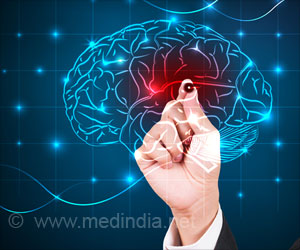of a part of the body (partial) or the entire body (generalized) with/without loss of consciousness and control of bowel or bladder function.
There is approximately 1 out of every 240 children less than 16 years of age in the UK having epilepsy. The anti-epileptic drugs fetch a total of £165 million – 0.94% of the total drugs budget annually to the NHS. Despite all these measures, there is always an ineffectual control of seizures with drug therapy and surgical treatments in 20-40% of patients with epilepsy. This attracts more effective, less expensive, and safer adjunctive management strategies for epilepsy.
Who was Mozart?
Wolfgang Amadeus Mozart (27 January 1756 – 5 December 1791), was a famous composer on piano and violin of the Classical period in the 18th century. He started his music journey at the age of 5 years. Despite his dubious, early death at the age of 35, he is considered among the greatest composers of all time, a talent that would not be witnessed again in 100 years (as per Joseph Haydn – “Father of the Symphony” and “Father of the String Quartet”). Even the initial works of Ludwig van Beethoven were produced under the guidance of Mozart.
“Mozart effect”
One of the most complex rhythmic stimuli for modulating brain activity is listening to music. The “Mozart effect” refers to the enrichment or normalization of higher brain function amalgamated with listening to Mozart’s music.
The impact of the composer’s Sonata for Two Pianos K448 in D major, also called Mozart K.448 was first established by Rauscher et al. in 1993 who found that listening to the first 10 min of the Mozart Sonata in 36 college students resulted in a significant short-term enhancement (10-15 min) of spatial-temporal reasoning and spatial IQ scores by enhancing the blood flow to the region. Even fMRI studies support the Mozart effect on the brain.
History of Mozart Effect and Epilepsy
Hughes et al. first demonstrated the Mozart effect in epilepsy in 1998 by the reduction in epileptic activity on the EEGs of 23 out of 29 adult patients. The patients were tested before, during, and after the Mozart music along with the control music.
The assuring effect of listening to Mozart on reducing seizure frequency has been replicated by many other studies since then over the last 22 years.
Mozart Study
The present study analyzed the outcomes of listening to Mozart’s Sonata for Two Pianos K448 with Haydn’s Symphony No 94. Intracerebral electrodes were used to estimate the effects on brain activity that had been implanted in the brains of epilepsy patients before surgery.
“To our surprise, there were significant differences between the effects of listening to Mozart’s K448 and Haydn’s No 94. Listening to Mozart led to a 32% decrease in EDs, but listening to Haydn’s No 94 caused a 45% increase (in men),” says Professor Ivan Rektor who led the study from the Epilepsy Centre at the Hospital St Anne and CEITEC Masaryk University, Brno, Czech Republic.
The acoustic properties of the music, such as the rhythm, dynamics, and tone, thus confirm a different effect on the brain oscillations or brain waves of men and women. Other studies speculate that the emotional effects of music, like dopamine (the main neurotransmitters of the brain’s reward system), are released when listening to music and this may promote anti-epileptic effects.
However, there is no clear mechanism to explain the effect. And due to this, there exists a certain amount of skepticism by many clinicians due to its poorly understood
“We found that the reduction in EDs was larger in the lateral temporal lobe, which the part of the brain which participates in translating acoustic signals, rather than in the mesiotemporal limbic region, which plays an important role in the emotional response to music. The effects of listening to music on epilepsy cannot be explained by the effect of dopamine released by the reward system. Our patients were not music connoisseurs and said they were emotionally indifferent to the two pieces of music. There was, therefore, no reason to believe that K448 evoked more pleasure than No. 94,” says Professor Rektor.
Musical Approach to Epilepsy
The present study thereby anticipates that these findings could draw more research into the effects of music on the brain. This may in turn flag the route for the development of individualized music therapies for the prevention of epileptic seizures in the future.
The authors thus recommend using well-defined acoustic properties of the musicas a non-invasive method to reduce epileptic activity in patients with epilepsy.
Statistics on Epilepsy
- Approximately 50 million people live with epilepsy globally and among them, 6 million people are from Europe.
- There is at least one episode of seizure witnessed at some time in the lives of 15 million Europeans.
- The low and middle-income countries comprise almost 80% of people with epilepsy and three-quarters of them do not get the appropriate treatment.
- There is up to three-times a higher risk of premature death in people with epilepsy when compared to the general population.
- People suffering from epilepsy and their families face a lot of stigma and discrimination in many parts of the world.
- However, with proper diagnosis and treatment, up to 70% of people with epilepsy could live seizure-free.
- Nearly 25% of epilepsy cases from a birth injury, stroke, central nervous system infections, or post-traumatic events can be prevented.
DOs and DONTs in Epilepsy
- Protect the person from any nearby sharp objects during a seizure event.
- Never put anything in the person’s mouth during a seizure, not even water until the person regains consciousness.
- Do not try to mobilize or restrain the person. Clear the crowd from the area to ensure ventilation to the person.
- Always seek emergency assistance when needed.
- Ensure to stay with the person until they recover from the seizure.
- Always record the time and the length of the seizure episode for further diagnosis by the expert.
References:
- Music and Spatial Task Performance: A Causal Relationship.- (https://eric.ed.gov/?id=ED390733)
- Daily listening to Mozart reduces seizures in individuals with epilepsy: A randomized control study – (https://www.ncbi.nlm.nih.gov/pmc/articles/PMC7278546/)
- Mozart effect in epilepsy: Why is Mozart better than Haydn? Acoustic qualities-based analysis of stereoelectroencephalography – (https://pubmed.ncbi.nlm.nih.gov/33527581/)
- Fostering Epilepsy Care in Europe – (https://www.who.int/mental_health/neurology/epilepsy/euro_report.pdf)
- Epilepsy – (https://www.who.int/news-room/fact-sheets/detail/epilepsy)
- Do’s and Don’ts of Seizures – (https://www.nm.org/healthbeat/healthy-tips/dos-and-donts-of-seizures)
Source: Medindia



